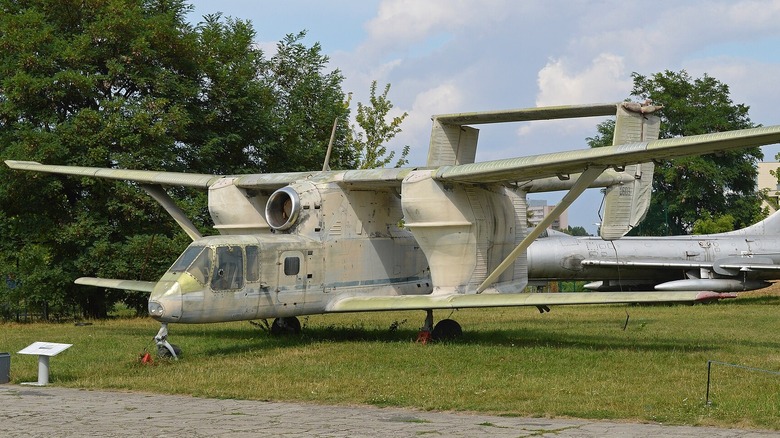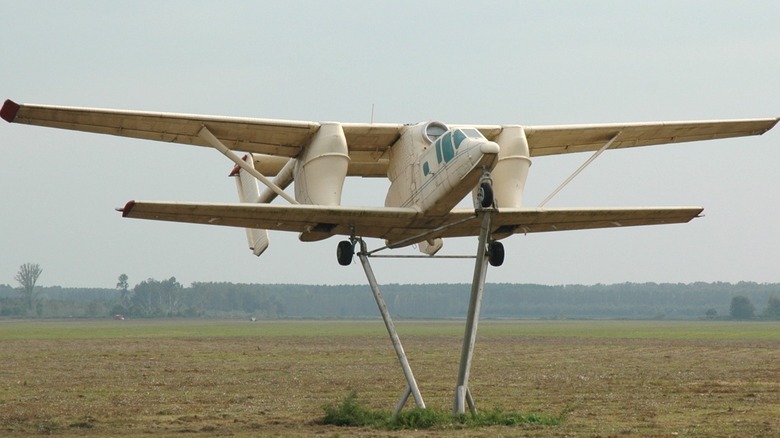This Jet Holds The Record For The Slowest Ever Made
When we think of jet aircraft, blazing speeds and sleek designs often come to mind. However, not all jets are built to break speed records. In fact, one stands out not for its breakneck speed but for the exact opposite: the PZL M-15 "Belphegor." This Polish-built plane is officially the slowest mass-produced jet aircraft in history, with a maximum speed of just 200 kilometers per hour (120 mph).
Developed in the 1970s in response to a need for more capable crop-dusting operations in the Soviet Union, the PZL M-15 was intended to supersede the aging Antonov An-2 (one of the oldest aircraft still in service today). The M-15's most distinctive feature was its jet engine, the Ivchenko-Progress AI-25 turbofan, making it the only jet-powered biplane ever produced. However, this jet engine imposed higher operating and maintenance costs compared to the piston-powered Antonov An-2. These issues eventually limited the Belphegor's production run to just 175 units between 1976 and 1981.
What made the PZL M-15 so remarkably slow?
The PZL M-15 Belphegor's sluggish speed was not some quirk in its design — it was a direct result of its specialized architecture. Its biplane configuration, which allowed for increased lift and better low-speed control, resembled the designs seen in some of the best WWI fighter planes. The biplane form, compared to a monoplane (single-wing) design, inherently creates more aerodynamic drag, resulting in lower speeds.
The AI-25 engine powering the M-15 generates 14.7 kilonewtons (approximately 3,300 pounds-force) of thrust. It was originally intended for the Yakovlev Yak-40, a tri-jet airliner. In the M-15, a thrust-to-weight ratio of about 0.26 was achieved, with the jet's maximum takeoff weight of 5,650 kilograms (12,456 pounds). This low ratio restricted the aircraft's ability to overcome aerodynamic drag, limiting its maximum speed to 200 km/h, and its cruising speed to between 140 and 165 km/h (87–103 mph).
The PZL M-15's large wing area, while essential for carrying substantial loads of agricultural materials, also contributed to its slow speed. This is because larger wings generate more drag, which opposes the forward motion of the aircraft. The two enormous pesticide tanks (combined capacity of 2900 liters) mounted between the wings also added more weight and resistance, amplifying the M-15's slowness and making it even harder to maintain speed during flight. Overall, the PZL M-15's slow speed was a trade-off for its intended purpose.

